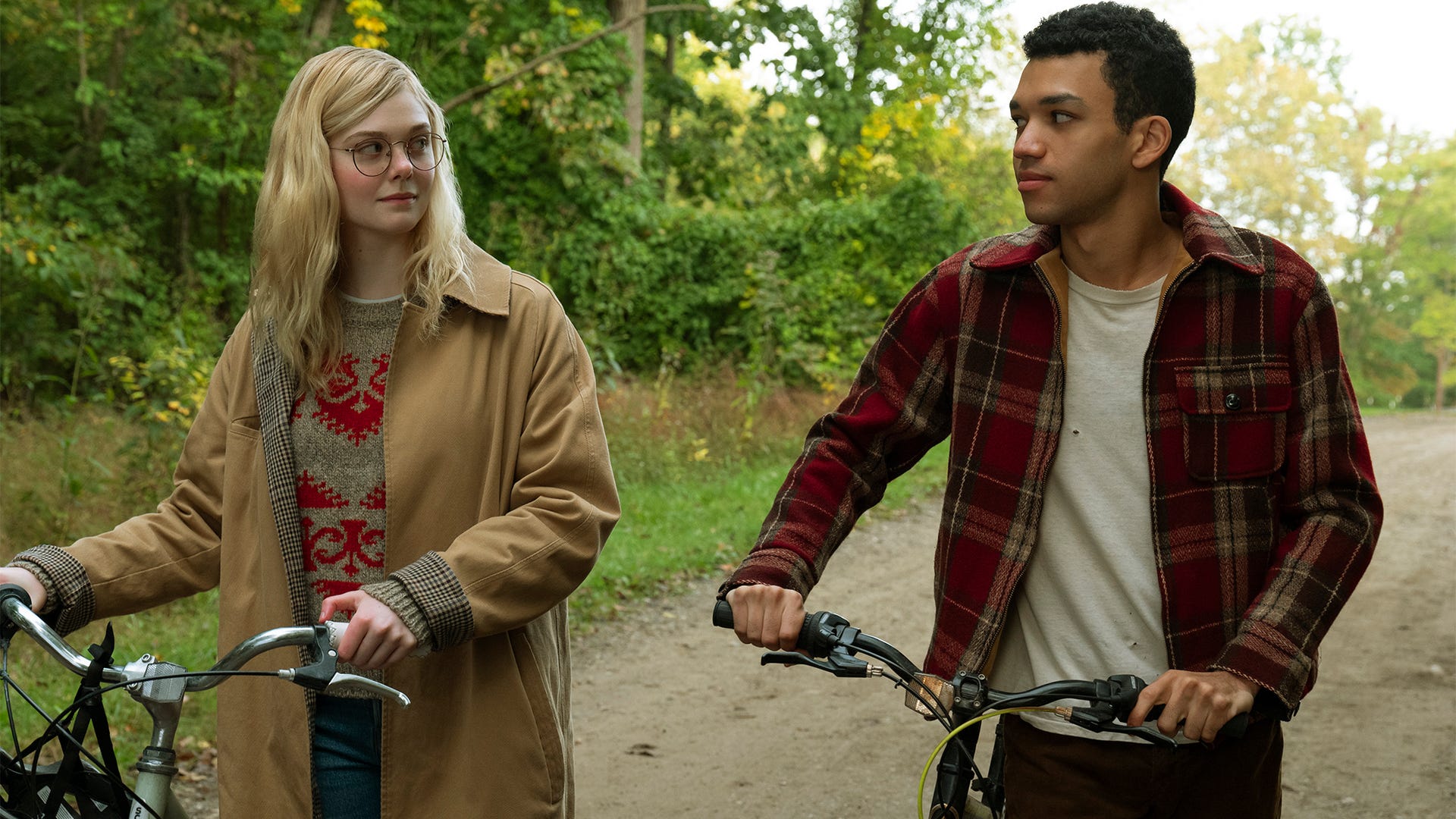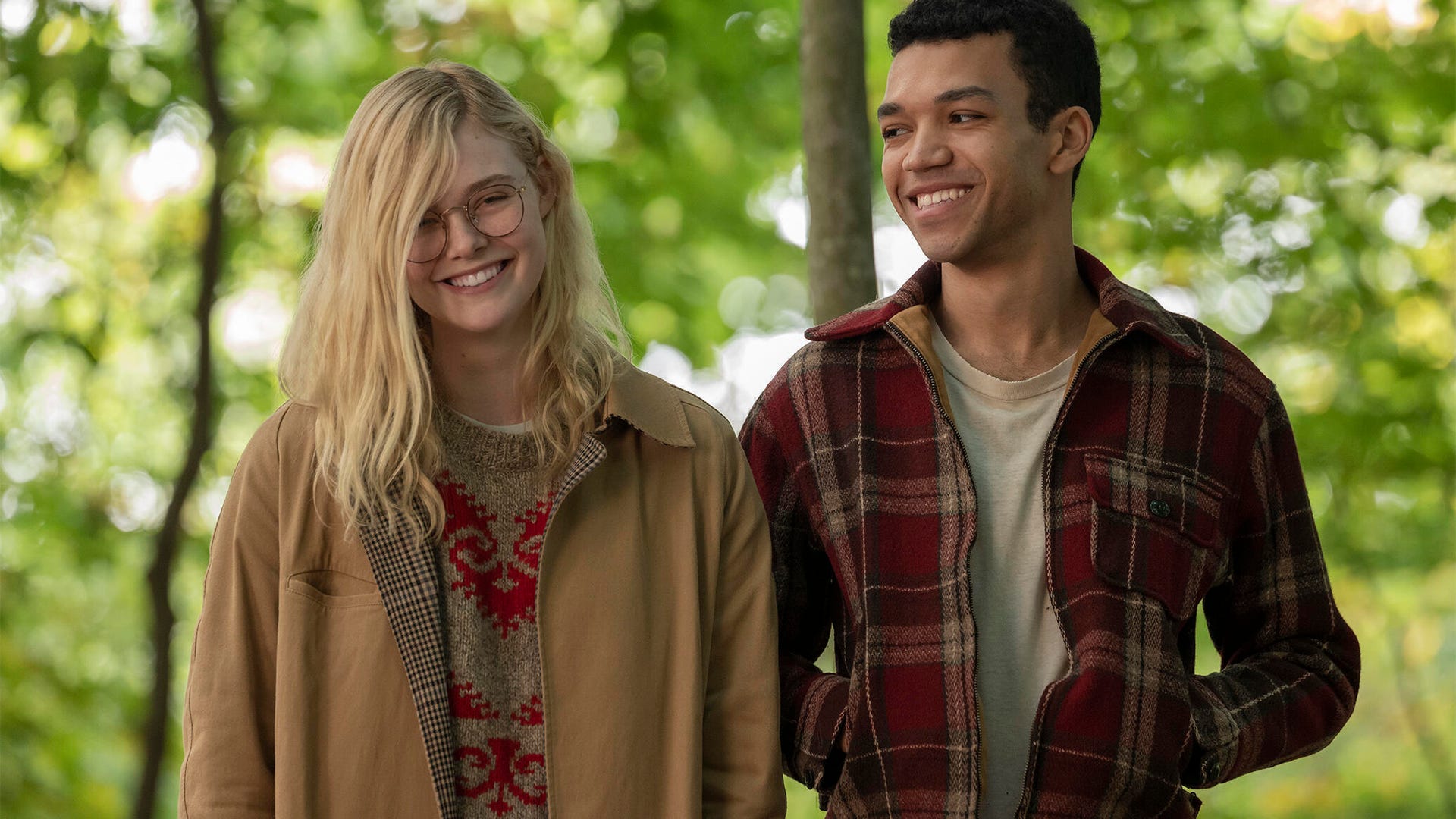Join or Sign In
Sign in to customize your TV listings
By joining TV Guide, you agree to our Terms of Use and acknowledge the data practices in our Privacy Policy.
All the Bright Places Review: Netflix's Latest Young Adult Film Misses the Mark on Mental Illness
The movie is a hollow shell of Jennifer Niven's heartbreaking novel
[Warning: The following contains major spoilers for Netflix's All the Bright Places. Read at your own risk!]
Not everything Netflix touches is going to instantly turn to gold, but the streaming service has had such success with its young adult-oriented fare the last few years that it's a little surprising when a project is as big of a disappointment as the new film All the Bright Places. (Note: Netflix is merely the distributor of All the Bright Places, not the production company behind it.)
All the Bright Places stars Elle Fanning as Violet Markey and Justice Smith as Theodore Finch, two high schoolers who couldn't be more different socially but who find comfort and friendship in one another after the latter, who's preoccupied with thoughts of death and dying, saves the life of the former when he finds her standing on the railing of a bridge. As the two work together on a school project in which they must explore the wondrous places of Indiana, they form a bond and slowly fall in love. But while Finch helps bring Violet back to life following the death of her sister in a car accident, Finch struggles silently from an undiagnosed mental illness.
Discover your new favorite show: Watch This Now!
The two-hour film, which is based on the best-selling novel of the same name by Jennifer Niven, is effectively hollow, a shell of what on the page is a heartbreaking story about mental illness and how it affects not just the person directly involved but those they love and who love them in return. The Violet and Finch of the movie feel more like faint sketches held together by lists of attributes and anecdotes rather than the well-drawn characters of the novel, who are real people with real feelings and emotions. The onscreen pair's shortcomings are made worse by the fact there is little chemistry between the two leads. But the film's biggest problem is that there's little insight into Finch or his mental state for nearly half the film, and then after it's revealed, it's still not treated with the level of compassion one might expect from a film about mental illness.
While the novel alternates between Violet's and Finch's points of view, the film is mostly told from Violet's perspective, save for a few moments that reveal Finch's mother is often absent, his father was abusive and is out of the picture, and his older sister is raising him. This means the invaluable insight readers have into Finch's mental state throughout the novel is essentially lost in the transition to the screen. Meanwhile, the depiction of the means to recovery aren't portrayed in the best light either, as counselors are well-meaning but fail to understand or connect with the young men and women in their charge. All of this eventually leads to the lessons that Violet learns ringing a bit hollow as well.

All the Bright Places
Michele K. Short/NetflixWhile it's clear from the first pages of the novel that Finch is struggling to "stay awake" -- i.e. not slip into another depressive state -- it's not necessarily clear in the film he is struggling with bipolar disorder. We see him speaking with his guidance counselor (played by Keegan-Michael Key), but it isn't until an abrupt shift in the middle of a scene 53 minutes into the movie that viewers are really let in on Finch's fragile state.
Netflix's 2020 Original Movies and TV Shows: A Complete Guide
This is realistic in the sense that it's not always obvious when a friend or loved one has a mental illness because they might be afraid or ashamed to speak up or refuse to admit something is wrong. The stigma surrounding mental illness means many people live in silence, and Nevin, who reveals in an author's note at the end of the book that she lost someone close to her to suicide, clearly understands this and the accompanying grief of being a survivor of suicide all too well. She also understands that those same people are rarely given answers or explanations. But given that the book does give us insight into Finch's pain and the ways in which he tries to cope, it's unfortunate that the film, which was co-written by Nevin and Liz Hannah (The Post, Long Shot), doesn't offer the same experience -- or rather, that it doesn't do it as well or to the same extent.
By allowing us to experience Finch's highs and lows alongside him, it leads to a more emotional and well-crafted story, yes, but more important, it means we as viewers might better understand someone like Finch or potentially be better equipped to recognize the signs of someone crying out for help in the future. There's no handbook for how to deal with a loved one with mental illness or losing a loved one to it, and a fictional story such as this one cannot and should not be treated as such, but the book and the film both end with Violet hopeful about her ability to move on and find the beauty in life, and if Finch's illness is not handled with the utmost care leading up to that point, the message of the story not only falls flat but threatens to actually feel reckless and manipulative as well.
If you or someone you know is having suicidal thoughts, you can call the National Suicide Prevention Lifeline at 800-273-TALK (8255) or you can reach the Crisis Text Line by texting "START" to 741-741.
All the Bright Places is now streaming on Netflix.

All the Bright Places
Michele K. Short/Netflix